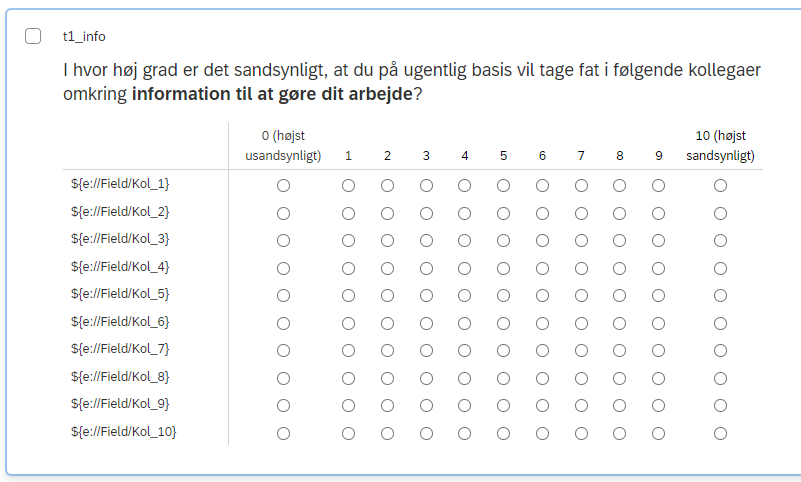Hi all
I am conducting a data collection on interpersonal relations within work units. Each work unit has a different number of employees, and hence, if Person A from unit 1 has 10 colleagues in her unit, a question on for example "seeking information from your closest colleagues" should list these 10 people by name in separate rows in the matrix. On the other hand, if Person B from unit 2 has 7 colleagues in his unit, Person B should only see these 7 people's names. The names and unit numbers are loaded as embedded data, as well as the name of the colleagues (Kol_1, Kol_2, etc.) in separate columns. See the image below for an example. I have managed to get it working IF I construct one block per work unit and list the correct number of colleagues (total number in each minus one, i.e., the respondent him or herself). However, I was wondering whether it is possible to use only one block for all the respondents independent of work unit affiliation?
I have managed to get it working IF I construct one block per work unit and list the correct number of colleagues (total number in each minus one, i.e., the respondent him or herself). However, I was wondering whether it is possible to use only one block for all the respondents independent of work unit affiliation?
When I try this, at this moment, Person B with only 7 colleagues are presented with these 7 names BUT also with three rows (without a name but with answer options) because the matrix is constructed with ${e://Field/Kol_1} all the way through ${e://Field/Kol_10}. I would like for these three rows to be automatically and dynamically omitted when the cells in the embedded data are empty (as they are because only 7 colleagues exist).
Honestly, I am in doubt what I need to do for the rows to be omitted. Maybe JavaScript? Any help is much appreciated!
Hide rows in matrix question dependent on embedded data
Enter your E-mail address. We'll send you an e-mail with instructions to reset your password.





